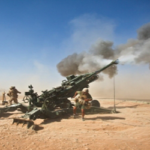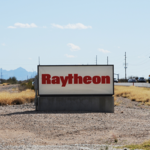US Army awards Raytheon $31.8 million contract for continued Excalibur production
 Company will provide 464 extended-range precision projectiles
Company will provide 464 extended-range precision projectiles
TUCSON, AZ — The U.S. Army awarded Raytheon Company (NYSE: RTN) a $31.8 million contract to produce and deliver 464 Excalibur Ib extended-range precision projectiles.
In full-rate production since mid-2014, Excalibur Ib has revolutionized cannon artillery, making it possible to engage targets precisely at long ranges. Excalibur is the longest-range, most precise, cannon-fired projectile in the world.
“There is growing demand in the international market for Excalibur’s accurate, first-round effects capability,” said Duane Gooden, Raytheon Land Warfare Systems vice president. Raytheon has also funded an internal development program aimed at bringing Excalibur’s unprecedented capabilities to the maritime domain.”
To meet the U.S. Navy’s need, Raytheon is developing Excalibur N5, a 5-inch/127 mm variant that uses Excalibur Ib guidance and navigation unit and an overall re-use of 70 percent of Excalibur Ib parts and components. Additionally, the N5 uses 99 percent of the Ib system’s software.
In 2015, the company test-fired Excalibur N5 at the Yuma Proving Grounds, scoring direct hits on targets more than 20 nautical miles away. The successful test demonstrated the maturity and low-risk nature of leveraging the Army’s program to quickly field a much-needed, affordable U.S. Navy capability.
About Excalibur
Excalibur is a precision-guided, extended-range projectile that uses GPS guidance to provide accurate, first-round effects capability in any environment. Excalibur’s level of precision creates a major reduction in the time, cost and logistical burden associated with using other artillery munitions.
- Combat-proven: Nearly 800 Excalibur rounds have been fired in combat with exceptional accuracy and lethality
- Precise: Excalibur consistently strikes less than two meters from a precisely-located target
- Responsive: Excalibur dramatically reduces mission response time
- Safe: Excalibur’s precision practically eliminates collateral damage and has been employed within 75 meters of supported troops
- Affordable: With its first round effects, Excalibur reduces total mission cost and time and the user’s logistics burden
- Evolving: Raytheon is adding a laser spot tracker to compensate for target location error, maintain precision in GPS denied or degraded environments, and enable engagement of relocated or moving targets
- Entering new markets: With Excalibur N5, navies will be able to deliver extended-range, precision naval surface fires
